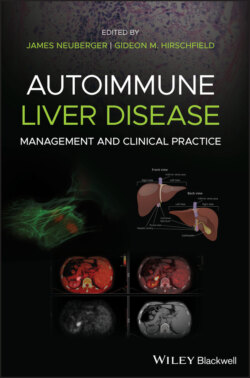Читать книгу Autoimmune Liver Disease - Группа авторов - Страница 59
Immunoregulatory Interplay Between Treg and Th17 Cells
ОглавлениеThe interplay and balance between iTregs and pathogenic Th17 cells is pivotal for immunoregulation [14]. Low concentrations of IL‐2 promote iTreg proliferation and survival but are suboptimal for Th17 proliferation and differentiation. However, the adverse effects of low concentrations of IL‐2 on Th17 cells can be overcome by proinflammatory IL‐1β. Conversely, high concentrations of IL‐2 drive proliferation of CD4 and CD8 effector cells, including Th17 cells. iTregs also exhibit plasticity based on the cytokine milieu. TGF‐β promotes differentiation of either iTregs or Th17 cells by inducing expression of FOXP3 and receptor‐related orphan receptor (ROR)γ, respectively. The cytokine environment dictates differentiation toward either regulatory iTreg or the proinflammatory Th17 phenotypes. In the absence of IL‐6 and IL‐21 (Figure 2.2), FoxP3 binds to RORγ suppressing its transcriptional activity and preventing Th17 differentiation. In the presence of IL‐6 and IL‐21, FoxP3 dissociates from RORγ, allowing Th17 differentiation. Retinoic acid from gut DCs also suppresses Th17 cells, while expanding iTregs. The resulting balance between iTregs and Th17 dictates tissue immunopathology in autoimmune diseases.
In addition, iTregs and Th17 cells can undergo interconversion [14]. Thus, Th17 cells can convert to immunosuppressive IL‐10‐secreting cells, and FoxP3‐positive iTregs can convert to Th17 cells. Conversion of iTregs to Th17 cells requires a milieu containing IL‐1β, IL‐6, IL‐23, and TGF‐β. Activated epithelial target cells, including cholangiocytes, secrete cytokines favoring conversion of iTregs to Th17. Thus, target tissues can produce an imbalance of Th17 and iTregs, intensifying chronic inflammation.
